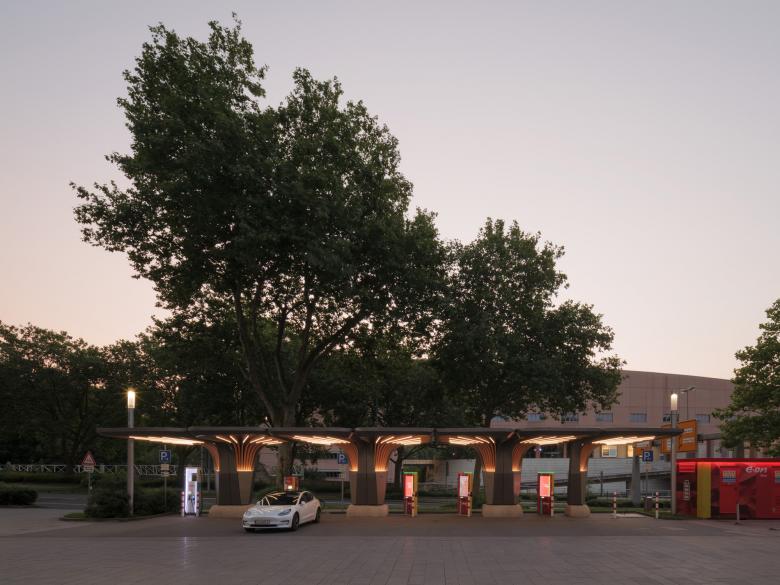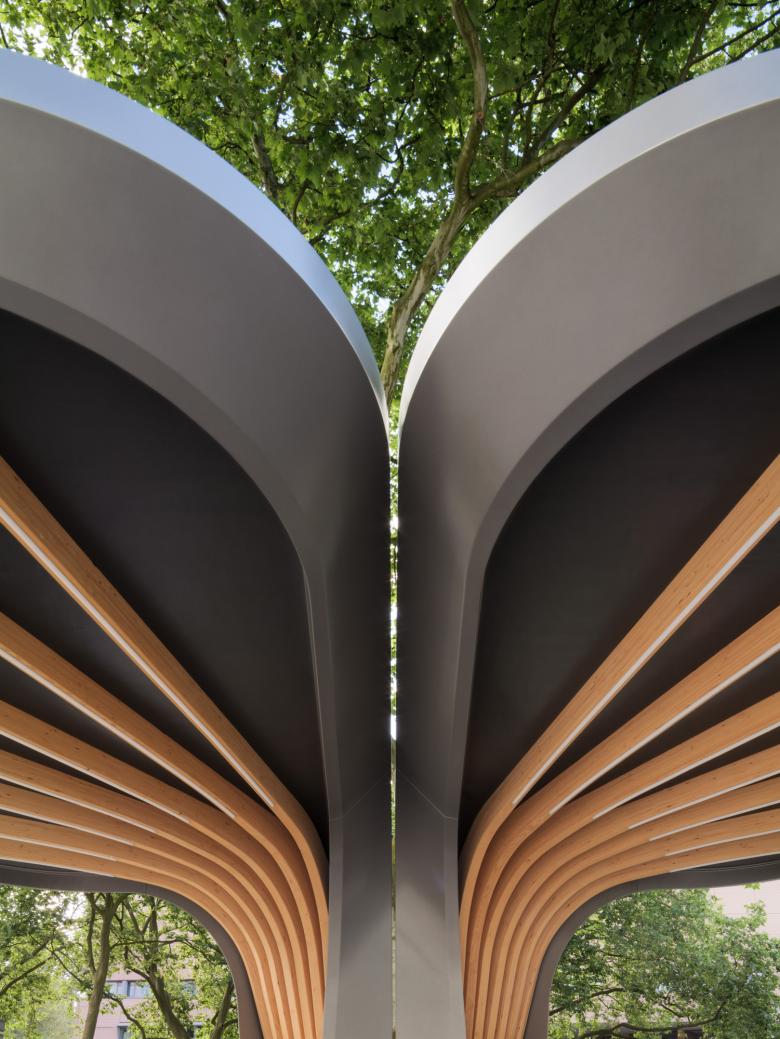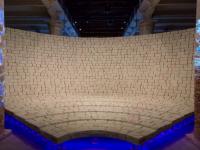E.ON Ultra-Fast Charging Stations
United Kingdom, Czech Republic, Slovakia, Hungary, Sweden, Denmark, Norway, Saksa
On behalf of E.ON Drive, GRAFT and GRAFT Brandlab developed a prototype for an ultra-fast charging station. This was further developed into an innovative, extendable system of modules capable of adapting to future requirements. The design creates a high-quality stopover environment that provides both customers and suppliers with a range of functions and additional services not commonly associated with filling stations. E.ON Drive and GRAFT’s design for ultra-fast charging stations breaks new ground by placing emphasis on user experience, thus contributing to the technology’s establishment in society.
With an elegant steel roof construction that extends up and over the user like a bright, airy canopy, the station’s design creates a defined space that is protected from the elements, transforming the charging area into a place of rest. Lighting integrated into the frame automatically activates when the charging zone is occupied, creating a clearly specified, safe and comfortable space.
These frames can be configured in different ways: either featuring an opaque roof with or without greenery; or a glass roof with or without integral photovoltaic panels. When implemented, the photovoltaic system supplies energy for the lounge and the integrated media technology. Slats beneath the roof act as filters, modulating and channeling sunlight into the charging bay area. The precision and dynamism of the construction underlines E.ON’s brand identity and consumer experience.
Based on two basic modules, the system is able to cater to a wide variety of charging and parking situations:
The smaller of the two modules can be combined to form XS or S stations. With a rectangular footprint of around 3.5m × 5m, it was developed for use in existing car parks and service areas. Its clever geometry makes it possible to provide partially covered parking for one to two spaces. Its self-supporting steel structure allows the modules to be extended linearly to create smaller drive-through variants with up to four charging points. Such stations are also suitable for urban contexts, providing covered barrier-free parking in parallel or angled configurations. With a hexagonal footprint, the larger module can be used for M and L stations. The first generation of M stations are designed as drive-through solutions equipped with four to eight charging points, while the L stations, with six to eight charging points, incorporate a customer lounge for use during charging cycles.
In the future, the modular concept can be extended to create XL hubs of varying sizes with additional amenities such as shops, food provision, leisure, spas, fitness and entertainment.
Embodying similar principles in order to ensure a high-quality stopover experience, the station lounges feature fully glazed external walls that create a sheltered space open to the surroundings. Natural materials are used throughout the interior to create a restful, relaxing atmosphere. Media elements are also incorporated in to the design, for example touch screens integrated in the furniture, which enable customers to communicate directly with suppliers.
The recognizable brand architecture of the first generation of E.ON charging stations is scalable, smart and sustainable, and perfectly embodies the company’s spirit of innovation at the forefront of technological solutions for society. A goal of the design is that many of the featured elements, which are primarily aimed at increasing customer experience and user friendliness, will find their way into future government tenders and consequently be made accessible to as many potential users as possible.
- arkkitehdit
- GRAFT
- Location
- United Kingdom, Czech Republic, Slovakia, Hungary, Sweden, Denmark, Norway, Saksa
- Year
- 2018 - ongoing
- Client
- E.ON
- Status
- Design guideline, first implementation
- In collaboration with
- GRAFT Brandlab
- Architect
- GRAFT Gesellschaft von Architekten mbH
- Partner
- Dennis Hawner, Lars Krückeberg, Wolfram Putz, Thomas Willemeit
- Project Leads
- Caroline Lossack, Sebastian Maßmann
- Project Team
- Benedikt Boschert, Chrisanthi Karta, Dorian Mandzukic, Emma Rytoft, Haotian Yang, Jerzy Gabriel, Jesus Navarro Murcia, Laurent Thill, Leon Jakob Seibert, Luis Tomas, Marta Piaseczynska-Karaivanov, Marvin Bratke, Philip Weibhauser, Sebastian Gernhardt, Sor














